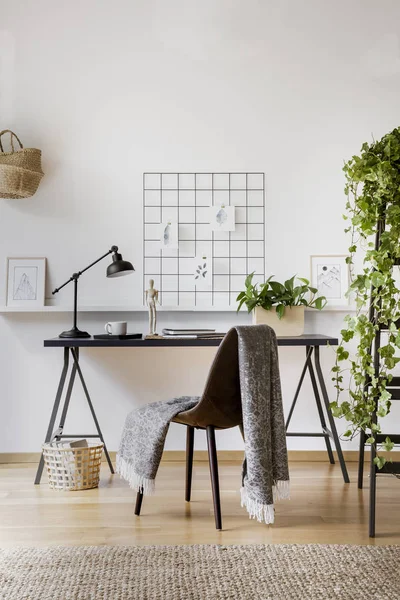Last updated on May 29th, 2023 at 04:22 pm
The wandering jew plant is a great plant to have in your home. They can grow well in any type of environment and because they are succulent, they don’t need much water. They also stay small so they won’t take over your floor space. These make them ideal indoor plants even for beginners.

But how if you don’t have enough direct sunlight in your home? can wandering Jews tolerate low light?
Yes, they can, wandering Jew plants are well known for their tolerance for low light. They can be found in many low-lit places such as thickets, rock gardens, and even on roofs. As a matter of fact, it is better for them to thrive in a less light environment.
The Wandering Jew plant is the most popular type of succulents grown in North America. They are found everywhere from gardens to roadsides because they are so easy to grow and propagate. The Wandering Jews have been growing in popularity due to their ease of care and lack of maintenance required by them.
Table of Contents
Why does wandering jew need low light?
Wandering jew plants, also known as Tradescantia zebrina, are given this name because they have long petioles that resemble the tail of a wandering animal. but why does a wandering jew need low light?
Because Wandering Jew loses color when it is exposed to direct sunlight. It can also lose color if it is placed on a surface that is too hot.
Wandering jew plants prefer to grow in a shaded area or crevice and will thrive in low light. They flourish best when they are kept moist.
Wandering Jew plants will lose their dark green or brownish-green leaves and start losing their purple flowers. They will start to get light green leaves with purplish-brown edges.
The plant’s leaves will also start turning lighter in color and may turn yellow or white in the center area of the leaf.
Finding the Right Balance of Sunlight for Wandering Jew Plants
While wandering Jew plants are known for their tolerance of low light conditions, it is crucial to strike the right balance when it comes to sunlight exposure. While they can thrive in shade or low-light environments, they also benefit from some exposure to sunlight. Finding the perfect balance of sunlight for your wandering Jew plant is key to ensuring its optimal growth and overall health.
- Indirect Sunlight: Wandering Jew plants do well in areas with indirect sunlight. Place them near windows or in spots where they can receive filtered sunlight. This allows them to benefit from the natural light without being directly exposed to harsh rays.
- Morning Sun: Morning sunlight is generally milder and gentler compared to the intense afternoon sun. Consider placing your wandering Jew plant in a location where it can receive a few hours of morning sun. This will provide the plant with the necessary light energy without the risk of leaf burn or color loss.
- Sunlight Intensity: Keep in mind that the intensity of sunlight can vary depending on the region and time of year. If you live in a region with particularly strong sunlight, it is essential to protect your wandering Jew plant from direct exposure during peak hours. Utilize curtains, blinds, or sheer drapes to filter the sunlight and prevent leaf damage.
- Experiment and Observe: Every indoor environment is unique, and the lighting conditions in your home may differ from others. It is advisable to experiment with different locations and observe how your wandering Jew plant responds to sunlight. Monitor its growth, leaf coloration, and overall health to determine the ideal amount of sunlight it needs.
Remember, while wandering Jew plants can tolerate low light conditions, inadequate light can lead to leggy growth and diminished foliage vibrancy. On the other hand, excessive sunlight can result in leaf burn and color fading. Striking the right balance of sunlight will help your wandering Jew plant thrive, maintaining its vibrant colors and lush appearance.
By understanding the needs of your wandering Jew plant and providing it with the appropriate amount of sunlight, you can create an environment where it can flourish. Whether it’s a bright spot near a window or a corner with filtered light, finding the perfect balance will contribute to the long-term success of your wandering Jew plant.
Wandering Jew Plant Care Tips for indoor
Wandering Jew plants are also known as Tradescantia. They do not need much care and can grow in a typical home. Here are some tips to make sure your plant stays happy and healthy.
- Plant them in a pot that has drainage holes
- Water them regularly
- Keep the soil moist but not too wet or too dry
- Keep it out of direct sunlight for most of the day in order to avoid leaf burn
Soil conditions for wandering Jew plants
Wandering Jew plants are very hardy and can grow in a wide variety of soil conditions, but they are more likely to thrive in moist, well-drained soil with plenty of organic material.
Wandering Jew plants prefer light shade to full sun. They can also grow without too much direct sun if their leaves are protected from the sun by a plant cover or house.
A high level of humidity is necessary for the plant to thrive and maintain an attractive appearance. The best way to achieve this is by planting it near a source of water like a pond or fountain or adding an automatic irrigation system.

Gardening is my passion and growing plants indoors has always been a stress relief for me. Grow a banana tree in my apartment once (although failed to produce bananas).






